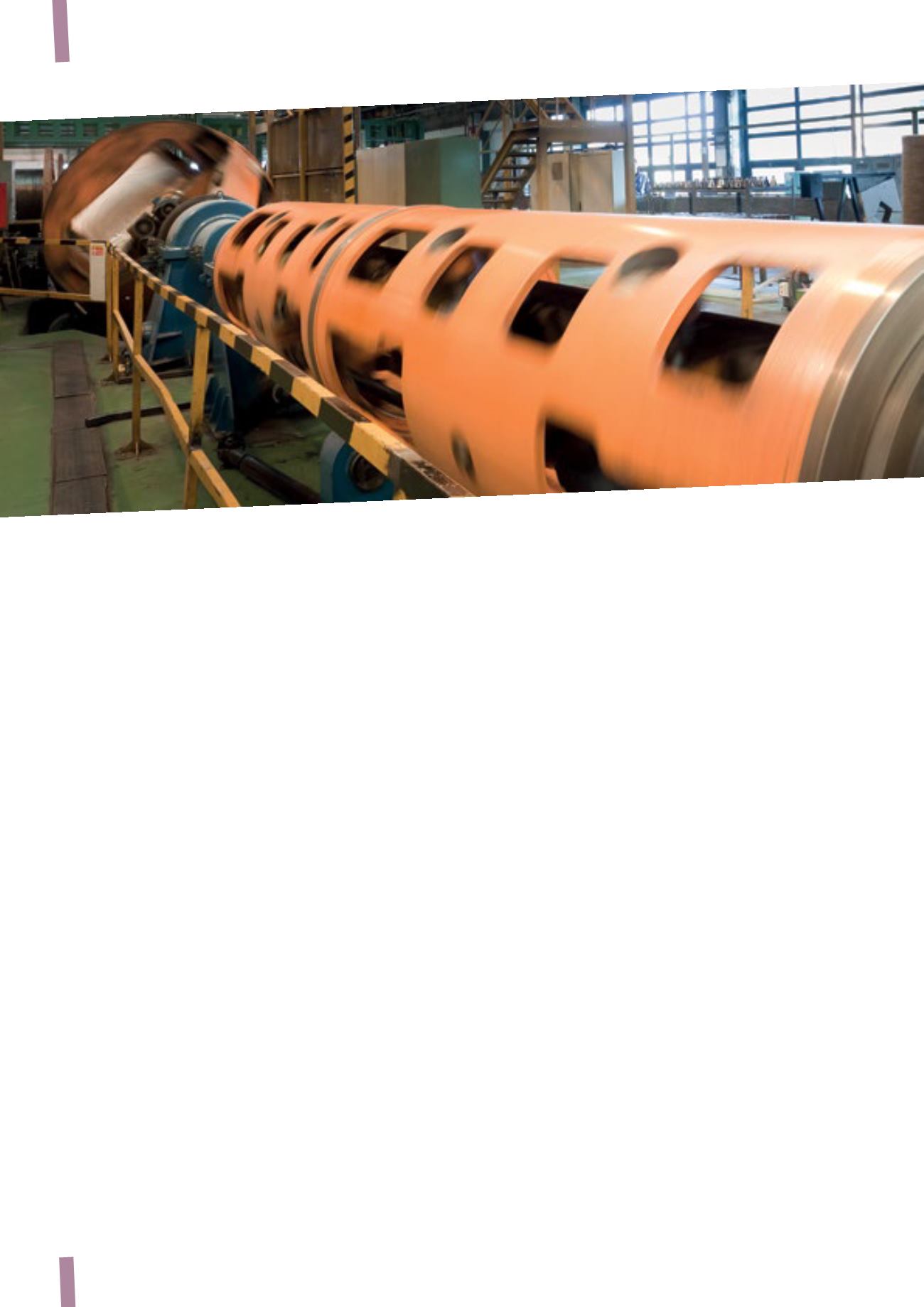
CONSOLIDATED FINANCIAL STATEMENTS >
DIRECTORS’ REPORT
86
| 2013 ANNUAL REPORT | PRYSMIAN GROUP
counterparties to discharge their obligations. This risk is
monitored centrally by the Group Finance Department, while
customer-related credit risk is managed operationally by the
individual subsidiaries. The Group does not have significant
concentrations of credit risk. It nonetheless has procedures
for ensuring that its trade counterparties are of recognised
reliability and that its financial counterparties have high
credit ratings. In addition, in mitigation of credit risk, the
Group has a global trade credit insurance policy covering all its
operating units.
A more detailed analysis of the risk in question can
nonetheless be found in the “Financial Risk Management”
section of the Explanatory Notes to the Consolidated
Financial Statements.
Liquidity risk
Liquidity risk is the risk that an entity does not have sufficient
financial resources to meet its obligations to trade or financial
counterparties on the agreed due dates.
With regard to the Prysmian Group’s working capital cash
requirements, these increase significantly during the first half
of the year when it commences production in anticipation of
order intake, with a consequent temporary increase in net
financial debt.
Prudent management of liquidity risk involves the
maintenance of adequate levels of cash, cash equivalents
and short-term securities, the maintenance of an adequate
amount of committed credit lines, and timely renegotiation
of loans before their maturity. Due to the dynamic nature
of the business in which the Prysmian Group operates, the
Group Finance Department favours flexible arrangements for
sourcing funds in the form of committed credit lines.
As at 31 December 2013, the Group’s total financial resources,
comprising cash and cash equivalents and undrawn
committed credit lines, amounted to in excess of Euro 1
billion. A more detailed analysis of the risk in question can
be found in the “Financial Risk Management” section of the
Explanatory Notes to the Consolidated Financial Statements.
Risks associated with fluctuations in commodity prices
The principal raw material used for making the Prysmian
Group’s products is copper. The other raw materials used
are aluminium, lead and steel, as well as various petroleum
derivatives, such as PVC and polyethylene.
All raw materials have experienced particularly significant
price fluctuations in recent years, which could continue
in coming quarters. The Group neutralises the impact of
possible rises in the price of copper and its other principal
raw materials through automatic sales price adjustment
mechanisms or through hedging activities; the exception is
petroleum derivatives (polyethylene, plastifying PVC, rubber
and other chemical products), where the risk cannot be offset
through hedging. Established commercial practice and/
or the structural characteristics of the markets concerned
mean that hedging of certain products (mainly in the Trade
& Installers business area) involves the periodic updating of
price lists (since it is not possible to use automatic sales price
adjustment mechanisms). In such cases, it is possible that,
in the current market context, the Prysmian Group would be
unable to quickly pass on the impact of fluctuations in raw
material prices to sales prices. In particular, in the case of
petroleum derivatives, it is standard practice for changes in


